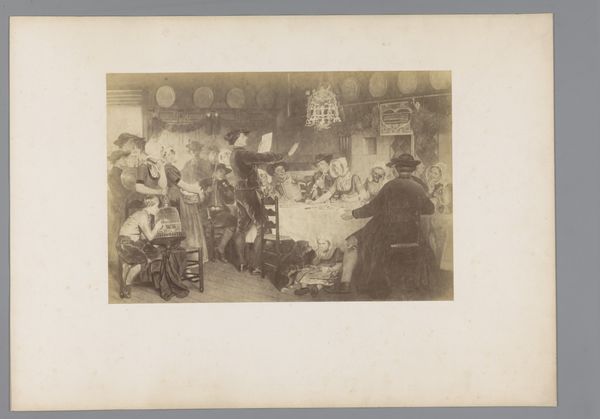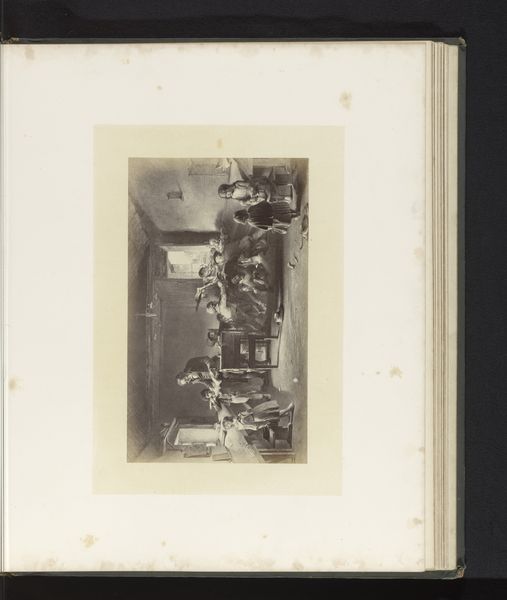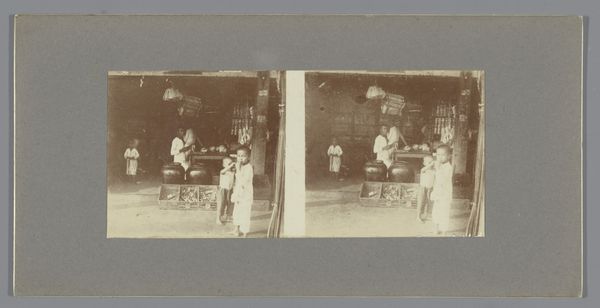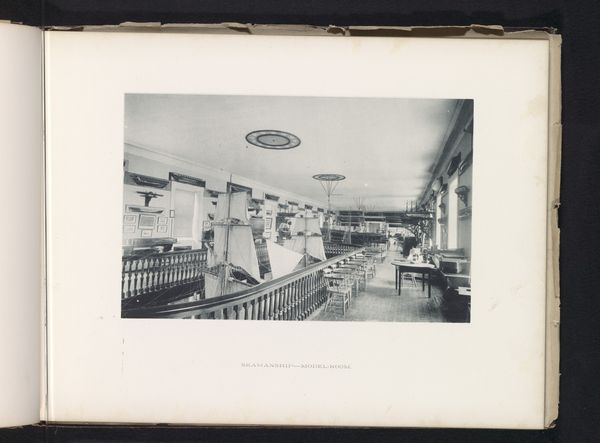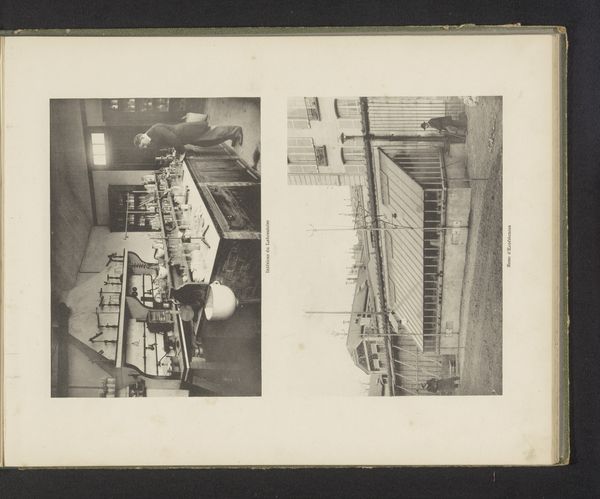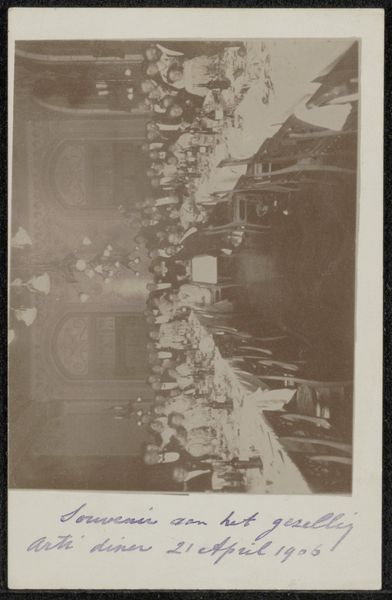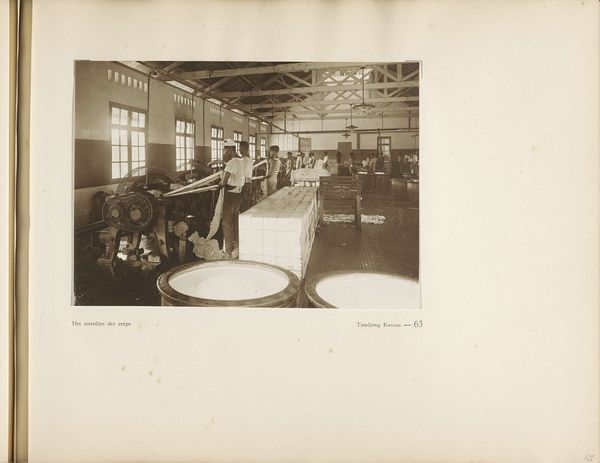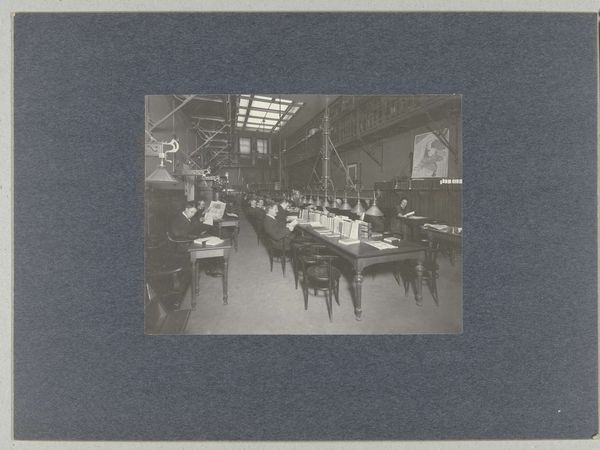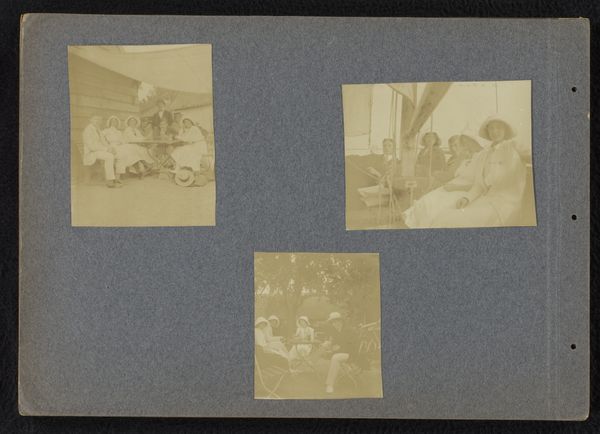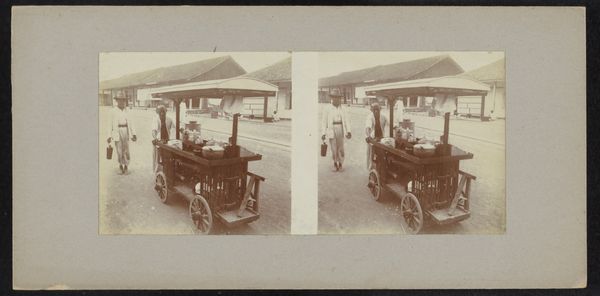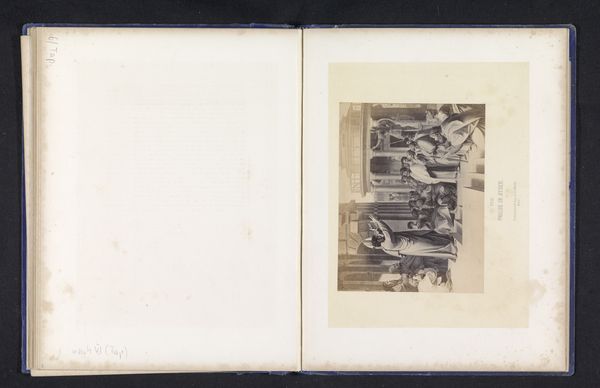
print, photography
#
portrait
#
pictorialism
# print
#
photography
#
genre-painting
#
realism
Dimensions: height 55 mm, width 57 mm, height 88 mm, width 178 mm
Copyright: Rijks Museum: Open Domain
Editor: This is "Bemanning en passagiers" or "Crew and Passengers," a photographic print by Robert Julius Boers, sometime between 1900 and 1922, and it’s housed at the Rijksmuseum. It almost feels like you’re peering into a memory, or some other world through an old stereoscope, capturing the atmosphere on this ship. How do you interpret this work from a formal perspective? Curator: The bilateral symmetry in this stereograph is particularly intriguing. Each half, though seemingly identical, presents subtle variations in light and shadow that invite careful comparison. Note the linear perspective created by the arrangement of passengers, guiding the viewer's eye to the vanishing point at the stern. How does the tonal range, from deep shadows to bright highlights, affect your reading of the scene? Editor: It definitely adds to that dreamy, nostalgic feeling. But I also think the composition itself directs my attention. The repeated cylindrical shapes in the foreground – are those vents? – create a strong rhythm that balances the crowded figures further back. Do you think the composition intends to elevate these mundane mechanical components? Curator: Perhaps, or consider this as an investigation of texture. Observe the contrast between the hard metallic surfaces and the soft, draped fabrics. This juxtaposition introduces a tactile dimension, encouraging us to perceive not only the visual representation but also the implied physical sensations of the maritime environment. How do these sensory contrasts work in combination with the implied depth within the frame? Editor: It brings this static photograph alive, almost making it seem like a moment suspended in time and space, filled with texture and atmosphere! The use of symmetrical doubling further amplifies the space. I also appreciate how focusing on the basics - symmetry, tone, shape, line - helped us get closer to this artwork and how it communicates! Curator: Indeed! By analyzing these visual elements, we gain deeper insights into the artist's intent and the artwork's aesthetic impact.
Comments
No comments
Be the first to comment and join the conversation on the ultimate creative platform.

